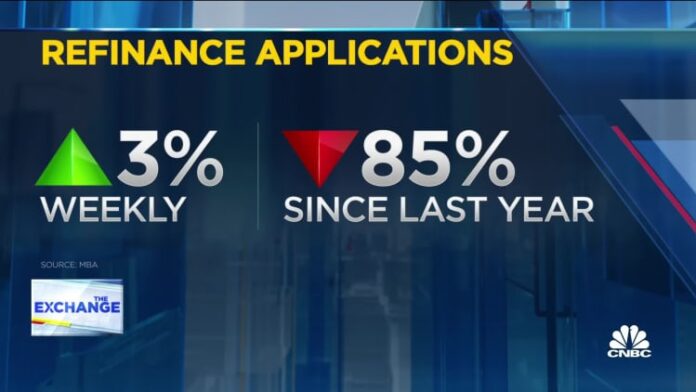A worker walks on the roof of a new home under construction in Carlsbad, California.
Mike Blake | Reuters
Builders were less confident about their business in December, but they are beginning to see potential green shoots.
Builder sentiment in the single-family home market fell 2 points to 31 in December on the National Association of Home Builders/Wells Fargo Housing Market Index. Anything under 50 is considered negative.
This is the 12th consecutive month of declines and the lowest since mid-2012, except for a very brief dip early in the Covid pandemic. The index was at 84 in December last year.
“The silver lining in this HMI report is that this is the index’s smallest decline in the past six months, suggesting we may be nearing the end of the cycle for builder sentiment,” NAHB’s chief economist said. Robert Dietz. “Mortgage rates have fallen from over 7% in recent weeks to around 6.3% today and for the first time since April homebuilders have seen future sales expectations surge.”
Of the index’s three components, current selling conditions fell 3 points to 36, buyer traffic was flat at 20, but sell expectations over the next six months rose 4 points to 35.
Regionally, sentiment was strongest in the North East and weakest in the West, where prices are highest.
The NAHB continues to blame high mortgage rates, which despite the recent decline are still about double what they were a year ago. This has resulted in affordability falling.
“In this environment of high inflation and high mortgage rates, homebuilders are struggling to keep housing affordable for homebuyers,” said NAHB Chairman Jerry Konter, a builder and developer from Savannah, Georgia. “Our latest survey shows that 62% of homebuilders are using incentives to drive sales, including providing mortgage rate buybacks, paying buyers points and offering price discounts.”
But Konter noted that with construction costs up more than 30% year-to-date, homebuilders are still finding it difficult to bring prices down. About 35% of homebuilders cut house prices in December, up from 36% in November. The average price decline was 8%, up from 5% to 6% earlier in the year.
“NAHB expects weaker housing conditions to continue in 2023, and we forecast a rebound in 2024 given the existing nationwide housing deficit of 1.5 million units and future lower mortgage rates expected with the Fed’s monetary easing in 2024 become,” said Dietz.














